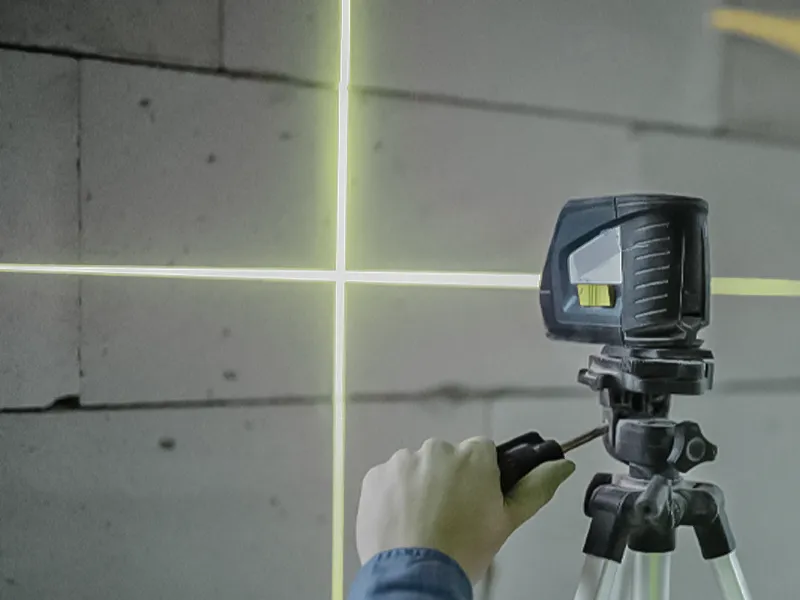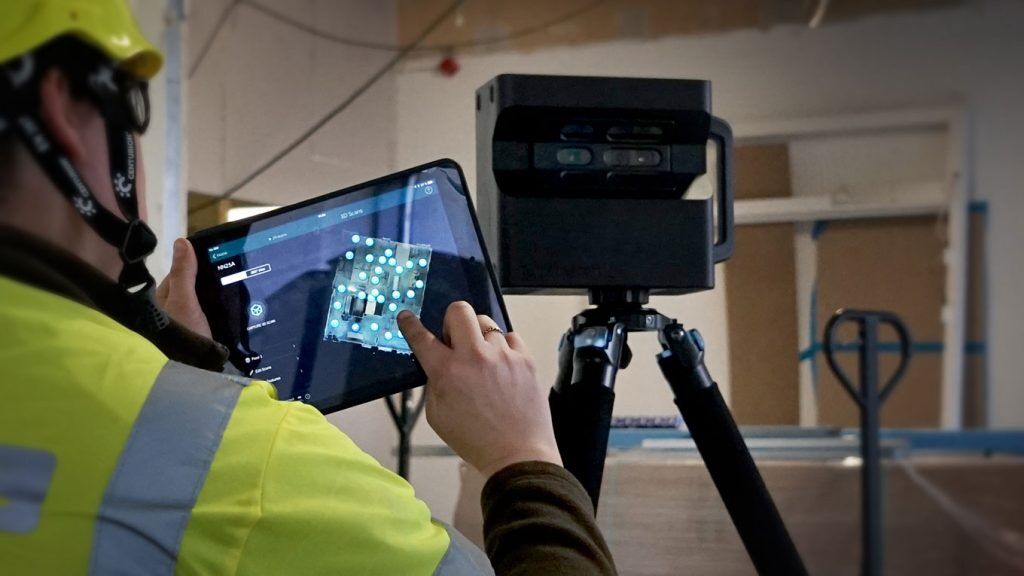A Builder’s Guide to Understanding 3D Scanning Benefits
Wiki Article
Exactly How 3D Laser Scanning Changes Architectural Design and Construction Projects
3D laser scanning is changing the landscape of architectural style and construction. This technology uses unrivaled precision in recording existing atmospheres, which assists in much better project planning and execution. It decreases errors while boosting effectiveness in various phases of growth. The ramifications for collaboration among designers, designers, and various other stakeholders are significant. These developments open up the door to brand-new style possibilities and innovative services. What exists in advance for this progressing modern technology?The Principles of 3D Laser Scanning Innovation
Although 3D laser scanning technology may appear complicated, its core concepts are transformative and uncomplicated for building design. This modern technology uses laser beams to record accurate dimensions of physical frameworks, producing a detailed point cloud that stands for the scanned environment. A laser scanner produces fast pulses of light, gauging the time it considers the light to return, which permits the calculation of ranges with impressive accuracy.The resulting point cloud can be converted into a 3D version, giving designers with very useful aesthetic data. This model enables experts to assess and adjust layout elements within their tasks, permitting cutting-edge options and boosted visualization. By employing 3D laser scanning, engineers can better recognize the status quo of a site, guaranteeing that new layouts harmonize with their environments. This integration of modern technology right into architectural layout notes a considerable improvement, promoting creative thinking and precision in the field.

Enhancing Accuracy and Performance in Architectural Projects
As building jobs significantly require accuracy and rate, 3D laser scanning becomes an essential tool in improving both accuracy and effectiveness. This technology records millions of data factors in a brief duration, developing accurate and in-depth 3D versions of existing frameworks. The capability to obtain accurate measurements reduces the danger of mistakes during the style stage, enabling engineers to imagine their tasks with unparalleled quality.The fast data collection procedure decreases the time invested on-site, enabling teams to concentrate on evaluation and layout renovations. With real-time data schedule, adjustments can be made swiftly, advertising an extra streamlined operations. The assimilation of 3D laser scanning into architectural methods not only improves measurement accuracy however additionally boosts the general task timeline, promoting quicker decision-making. In an industry where precision is important, this modern technology stands as a transformative force, raising the standards of architectural design and construction projects.
Enhancing Collaboration Amongst Stakeholders
While typical architectural processes usually include fragmented interaction among stakeholders, 3D laser scanning promotes a more cohesive collaborative environment. By offering accurate, high-resolution information, this innovation permits architects, professionals, clients, and engineers to operate from a unified point of reference. The thorough visualizations created with laser scanning remove misinterpretations and ambiguities, ensuring that all events have access to the exact same info.This openness improves decision-making and motivates timely comments, as stakeholders can conveniently picture style components and spatial relationships. Additionally, the combination anchor of 3D scanning information into Structure Info Modeling (BIM) systems even more streamlines collaboration, enabling real-time updates and alterations. Such smooth communication not only decreases conflicts however also accelerates project timelines, as all stakeholders continue to be straightened throughout the design and building and construction phases. Ultimately, 3D laser scanning changes conventional operations into a much more joint and efficient procedure, profiting all events involved.
Unlocking Imaginative Possibilities in Layout
By enabling architects to visualize complex elaborate details and spatial relationships, 3D laser scanning exposes innovative opportunities in layout. This innovation permits for accurate mapping of existing environments, enabling designers to check out ingenious principles that could have formerly appeared unwise. With highly accurate information, developers can explore unique forms and products, pressing the limits of standard design.Furthermore, the assimilation of 3D laser scanning right into the design process fosters collaboration amongst multidisciplinary groups, urging the exchange of concepts and boosting imagination. The in-depth visualizations produced by Discover More Here this modern technology not just aid in recognizing prospective design obstacles but likewise influence services that might not have been taken into consideration. Therefore, architects can produce much more dynamic and engaging areas that resonate with users while meeting practical needs. Inevitably, 3D laser scanning transforms the architectural landscape, encouraging developers to understand their visions with extraordinary accuracy and creativity.
The Future of 3D Laser Scanning in Architecture and Construction
The assimilation of 3D laser scanning right into architectural design not just enhances imagination however additionally establishes the phase for its developing function in the future of design and building and construction. As innovation breakthroughs, the accuracy and efficiency of laser scanning will certainly proceed to boost, enabling designers and home builders to develop much more intricate styles with accuracy - 3D Scanning. The use of this modern technology in real-time information collection will certainly promote better decision-making, minimizing mistakes and enhancing workflowsFuture applications might include digital and increased truth combinations, permitting stakeholders to visualize tasks in immersive settings. In addition, as sustainability becomes a priority, 3D laser scanning will sustain the growth of energy-efficient layouts by giving comprehensive understandings right into existing structures. As cooperation among various techniques becomes more essential, the capacity to share precise 3D models will foster advancement and boost task end results. Eventually, 3D laser scanning will redefine criteria in architectural design and building and construction methods.
Often Asked Concerns
What Is the Expense of Applying 3D Laser Scanning Technology?

The length of time Does a Normal 3D Laser Scanning Job Take?
A normal 3D laser scanning project can take anywhere from a couple of hours to several days, relying on aspects such as the job's size, complexity, and the degree of information required for precise information capture.What Kinds of Projects Advantage Many From 3D Laser Scanning?
3D laser scanning benefits various jobs, particularly large building and constructions, historical reconstructions, and intricate renovations. It improves straight from the source accuracy in measurements, decreases errors, and supplies thorough data necessary for efficient planning and implementation in building design and construction.
Exist Particular Software Application Programs Required for 3D Laser Scans?
Yes, specific software application are crucial for processing 3D laser scans. 3D Scanning. Popular alternatives include Autodesk Wrap-up, Faro Scene, and Leica Cyclone, each offering one-of-a-kind features tailored for imagining and evaluating checked information effectively in different projectsExactly How Does 3D Laser Scanning Impact Environmental Sustainability in Building?
3D laser scanning enhances ecological sustainability in building and construction by minimizing material waste, making it possible for accurate measurements, and promoting effective source usage. This innovation allows for better planning, decreasing the ecological footprint of construction projects with enhanced accuracy and efficiency.3D laser scanning is transforming the landscape of building style and construction. 3D laser scanning innovation might seem complicated, its core concepts are transformative and straightforward for architectural design. By enabling engineers to picture complex complex details and spatial connections, 3D laser scanning exposes innovative possibilities in layout. The integration of 3D laser scanning right into the design process promotes cooperation amongst multidisciplinary groups, urging the exchange of concepts and boosting creativity. The integration of 3D laser scanning into building layout not just improves creative thinking however additionally sets the phase for its evolving duty in the future of architecture and building and construction.
Report this wiki page